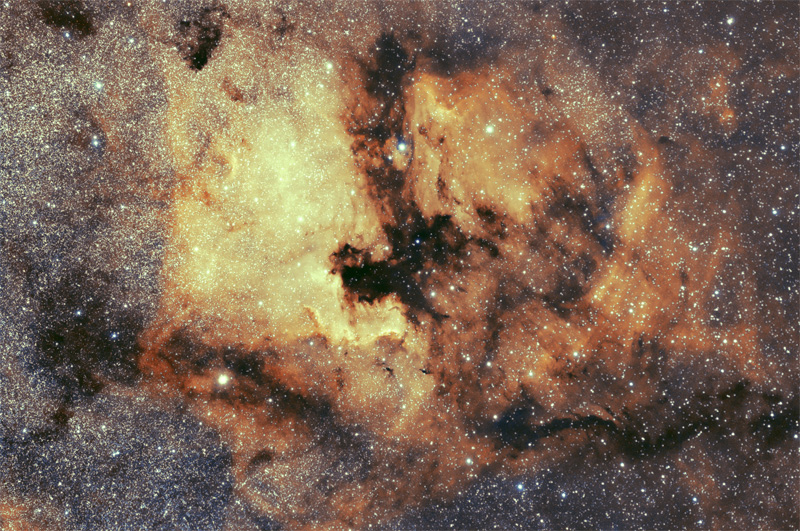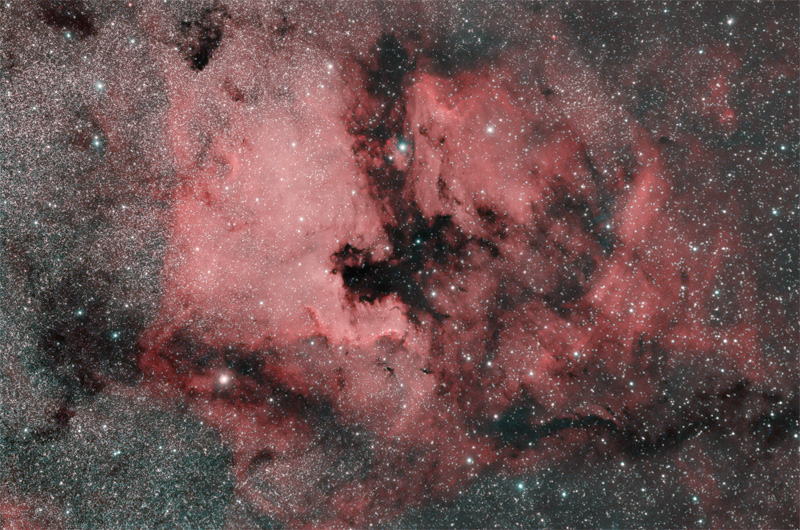NGC7000 + IC 5070 in Ha/OIII/OIII
I`ve been waiting for a clear moonless sky for many months now, just so I could give my latest filter a proper test. I purchased a Hutech IDAS LPS-V4 Nebula filter earlier this year (link to filter here) to see if a One Shot Color CCD could do a decent job of recording Ha and OIII at the same time. The theory was that as the OIII wavelength falls almost exactly half way between the green and blue pixels (at a lower sensitivity though), I should get be able to stack the 2 green channels and the blue channel all as one large stack, and therefore grab 3 times the exposure of OIII compared to the single red pixel collection Ha data. Well, it kind of worked. The Ha data is nearly sharp as previous sessions with a 13nm Ha filter, and certainly usable, but not as good as my current Baader 7nm Ha filter. The OIII data (even after stacking) seems a bit washed out, and I believe this is because of the wide passband around the OIII wavelength (50nm wide at the very top of the peak), allowing in additional noise that a real narrowband filter would block.
Even so, as an Ha/OIII/OIII combined image, taken from a moderately light polluted area in one single session without having to change filters, I would say it was worth the time to do this test. The real question will be what happens to the OIII data when the moon fills the skies, as OIII tends to be washed out from moonglow far more than Ha data.
Mount: EQ6 via EQMOD
OTA: Borg 60 @ f/3.8
Guiding: SW ED80 + SX Lodestar + Maxim
Imaging: Starlight Xpress M25C + MaximDL, 16 x 900s, Hutech LPS-V4 Nebula filter
Orchestrated: CDD Commander
Stacked: DeepSkyStacker
Post Process: PSCS2 + PixInsight
The Ha/OIII/OIII version
(Click on image for larger version)
or the version created using the Steve Cannistra Modified Bicolor Technique for combining Ha and OIII images (link)
(Click on image for larger version)

Posted by Steve under Astronomy | Comments Off on NGC7000 + IC 5070 in Ha/OIII/OIII

